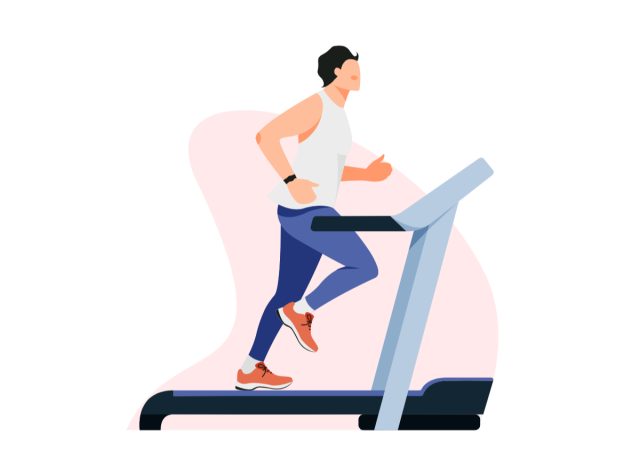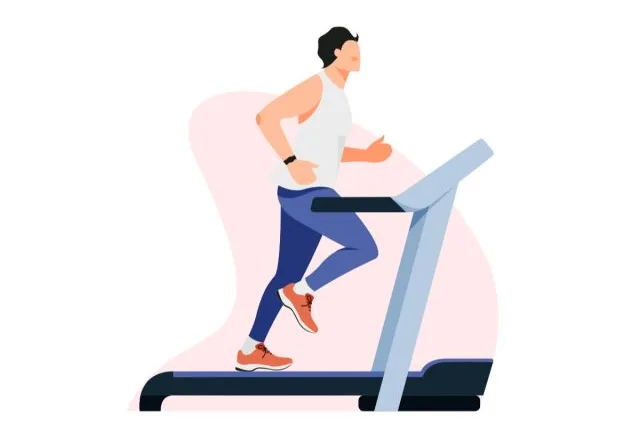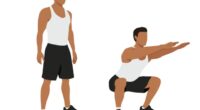If you are committed to losing body fat and improving your fitness level, one type of training stands out above the rest: high-intensity interval training (HIIT). HIIT involves alternating between short bursts of intense exercise and brief periods of rest or low-intensity exercise. This method is effective at burning a significant amount of calories during and even after your workout. Prepare to work up a sweat because we interviewed a fitness expert who shares her top recommendation for men looking to burn fat—and it’s all about HIIT.
It is important to note that HIIT may not be suitable for everyone. This type of training can be intense and stressful on the joints. However, for those who can safely do it, HIIT can be highly beneficial. It challenges your body in a short amount of time, increasing your metabolism and triggering the “afterburn effect.” This means your body continues to burn calories for up to 24 hours after your workout.
It’s always wise to consult with a certified personal trainer or strength coach before starting any new workout method or routine.
Now, let’s explore the number one fat-burning workout for men, as recommended by April Gatlin, senior master trainer at STRIDE Fitness. Gatlin considers HIIT as a “secret weapon for male fat loss.” Start with a 10-minute warm-up before engaging in the exercises outlined below.
The Workout
“You will have four minutes per round for a total of six rounds,” Gatlin instructs. “The objective is to work fast and hard (driving [your] heart rate up) and complete the round as quickly as possible to have a longer recovery time (bring [your] heart rate back down).”
1. 200-Meter Row or .1-Mile Treadmill Run


First up, get your heart rate up and cardio in by performing a 200-meter row or .1-mile treadmill run.
2. Chest to Ground Burpees (5 reps)
- Begin standing tall.
- Lower into a squat and place your hands on the floor before your feet.
- Jump your feet back into a plank position, keeping your body straight.
- Lower your chest to the floor.
- Press back up to a plank.
- Jump your feet forward to meet your hands.
- Explosively jump up, reaching your arms overhead.
- Complete 5 reps.
3. DB Front Squats
- Stand tall with your feet shoulder-width apart.
- Hold a challenging weight in each hand in the front rack position.
- Bend your knees, press your hips back, and lower into a squat.
- Descend until your thighs become parallel to the floor.
- Press through your heels to return to standing.
- Complete 7 reps.
4. Box Jumps
- Stand tall with your feet shoulder-width apart, one or two feet away from a plyometric box.
- Bend your knees and press your hips back slightly as if you’re about to perform a squat.
- Swing your arms back for momentum, and jump onto the box.
- Land softly in a slight squat position with both feet completely on the box.
- Stand up tall.
- Step back down to the ground.
- Complete 9 reps.
Alexa Mellardo
Alexa is the Mind + Body Deputy Editor of Eat This, Not That!, overseeing the M+B channel and delivering compelling fitness, wellness, and self-care topics to readers. Read more about Alexa
Frequently Asked Questions
What is the #1 fat-burning workout for men?
The #1 fat-burning workout for men is high-intensity interval training (HIIT). HIIT involves short bursts of intense exercise followed by brief rest periods. This type of workout is highly effective in burning fat and increasing metabolism.
How often should I do the fat-burning workout?
It is recommended to do the fat-burning workout 3-4 times a week for best results. Rest days are also essential for muscle recovery and overall health.
Do I need any special equipment for this workout?
You do not necessarily need special equipment for a fat-burning workout. Many HIIT exercises can be done with just your body weight. However, incorporating equipment like dumbbells or kettlebells can add variety and intensity to your routine.
Can I modify the workout if I’m a beginner?
Yes, the fat-burning workout can be modified for beginners. You can start with lower-intensity exercises and gradually increase the intensity as you build strength and endurance. It’s essential to listen to your body and progress at your own pace to avoid injury.






